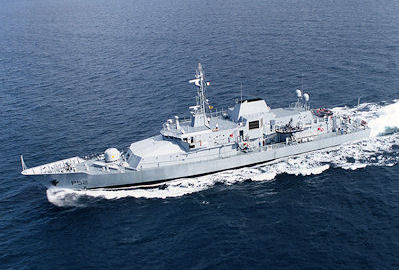The customer has just ordered a number of new build offshore patrol vessels (OPVs) that will be commissioned in 2015. The vessels will carry out a wide array of activities common to OPVs in service around the globe.
The major Trilogy system will integrate mobile users operating on a range of marine radio channels covering VHF, UHF and HF with operators utilising one of ten Trilogy 16 key panels installed at locations throughout the vessel.
The installation will also feature a second system designed to simply and quickly connect users in one of the pre-configured work groups. Those users can connect through one of the seventeen ‘plug & play’ user interfaces installed at work locations around the vessel. For example, when the ‘weapons control’ group is required users might plug in at locations including the bridge, gun positions etc. To change role, the user simply moves to their next task position and plugs in, becoming a member of the group associated to that position.
A feature common to many naval and maritime operations is their complex communications where, typically, no single solution can accommodate every operational scenario. This inevitably leads to a mixture of systems, each of which could be the best-in-class option for its particular role, but none of which are capable of working seamlessly together. In this application these include a number of HF, VHF and UHF radio channels as well as fixed operator interfaces.
In the nature of the high intensity environment found onboard, communications systems must be intuitive ensuring the highest level of operational efficiency.
The need of any command and control structure to be informed with the fullest and most up to date operational picture means that overcoming these communication challenges can offer significant strategic and tactical advantages.

The Trilogy solution is largely based on Commercial Off The Shelf (COTS) products that are in service around the globe in a range of different operational situations for major defence, emergency management and industrial customers. The first system installed on board the vessels is used to connect users on a number of radio networks and standard operator panels.
This system uses a single Mercury Interface Unit (MIU) installed with standard Radio Interface Boards (RIB) and Audio Expansion Boards (AEB) to allow communication to continue uninterrupted within the radio networks, with the addition of the ability to talk between the networks in either point to point or group/conference calls. Users on the Trilogy 16 key panels are able to talk to other panel users singularly or in groups or to either individual or groups of radio users.
A secondary system uses a combination of a standard MIU with custom manufactured ‘plug & play’ user interfaces and a PC based ‘Virtual Panel’. The user interfaces have been designed to provide optimum performance in this challenging environment and whilst not linked to the first system it is a simple process should the end user wish to do so in the future.
Users with “off the shelf” headsets that feature XLR connectors can report for duty at their given post and then plug into the intercom, having completed a tasking they can simply unplug, change location and plug in again.
This technology is scalable and whilst well suited to relatively small OPVs it is also equally suited to installations of a much larger size.
